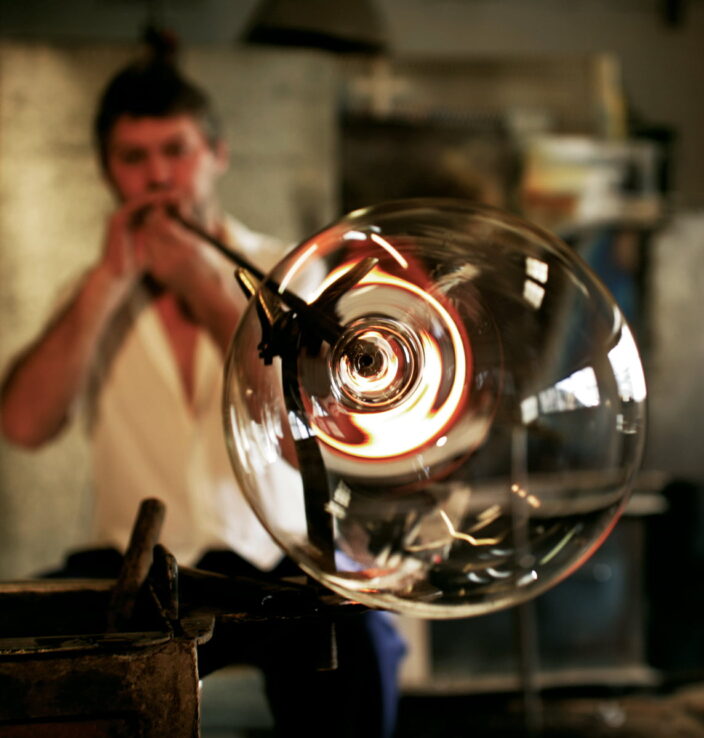The fascination of glass craftsmanship

Anyone who has ever seen the traditional production of a glass is struck by how fascinating this ancient craft is. There is a charm to the apparent contradiction of the primal fire and the demanding work of the glowing furnace with the precise mechanics and the instinct that is necessary to create these works of art. Despite the simplest of tools, the master glassmakers achieve an astonishing precision that cannot be achieved in this form
even with the most modern technology thus giving the human component an outstanding value.
As in music, where the handmade violins of the experienced masters from Cremona are considered by many to be unmatched despite today’s possibilities in the production of modern violins, Zalto glasses are fascinating instruments for drinking pleasure.

Perfection
Handcrafted perfection is the core principle of Zalto. That is why our glasses have always been made from carefully selected raw materials using complex traditional methods. The fine design of the glasses demands the skill of the glassblower to be unparalleled. The handmade work is reminiscent of the fine craftsmanship of Venetian glass artists of the Renaissance. Balance – virtuosity – taken to extremes – a combination of modern raw material technology with traditional centuries-old production methods. Regardless of the fascination with this craft, mouth-blown glasses still have advantages over machine-made glasses.
Mouth-blown bowls have a different surface structure that is microscopically rougher and results in a larger surface area. In contrast to mechanical watches, which are complex works of art, the perfect details of human craftsmanship with wine glass bowls cannot be achieved by machine to this day. The perfectly balanced design without seams and joins is another important point of our philosophy, that the wine is the focus and no detail of the glass should distract.


The human component
The human component is by far the most important factor. Every part of the glass is made by hand with the help of the simplest tools, with a perfectly coordinated team of eight people dividing the various stages of work. With the exception of the bowl, which is blown into a mold, the glasses are created free-hand using the trained eye of the glassblower. Only the best master glassmakers in the world can produce glasses of this quality and level of execution. This requires years of training and practice. The delicate, thin-walled production of lead-free crystal glass in combination with a decidedly slow cooling phase after glass blowing ensure its high elasticity. In conjunction with a meticulous final inspection, in which all the glasses that do not meet the guidelines are melted down and recycled, the effort that is necessary for the creation of those masterpieces that bear the Zalto logo becomes clear.
Tradition
The roots of our company lie in the northern Waldviertel, where the glass tradition goes back to the early 14th century. The Zalto brand goes back to glassmakers from Veneto, who settled in this region. The forest belt, which stretches from Saxony over northern Bohemia and the Bavarian forest to the Carpathian Mountains, has always been a focus of European glass culture due to its range of raw materials. At the turn of the century, the region was home to over a hundred huts. The Waldviertel once housed 120 glassworks. Little by little the old craft came to a standstill. After the decline of the glass industry and the enormous challenges for manual production, we are continuing this tradition.


With the introduction of the DENK’ART series and the uncompromising focus on high quality drinking and leisure glasses, the traditional Zalto brand was successfully led into the future. Today we are proud to continue this tradition as an independent, family-run company. This independence does not force us to pursue any marketing-driven product variety. Our guideline is to concentrate on the essentials, thought out and checked, down to the last detail. For this reason, we only bring products onto the market if they meet the high demands on functionality, aesthetics and customer benefits.
